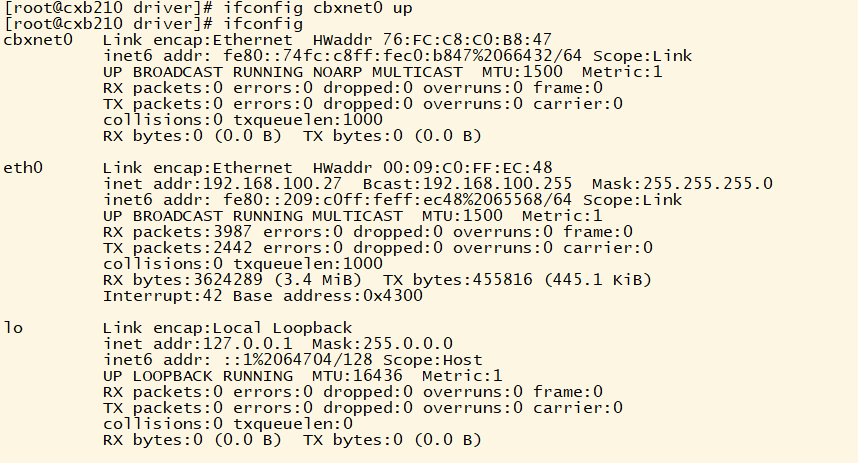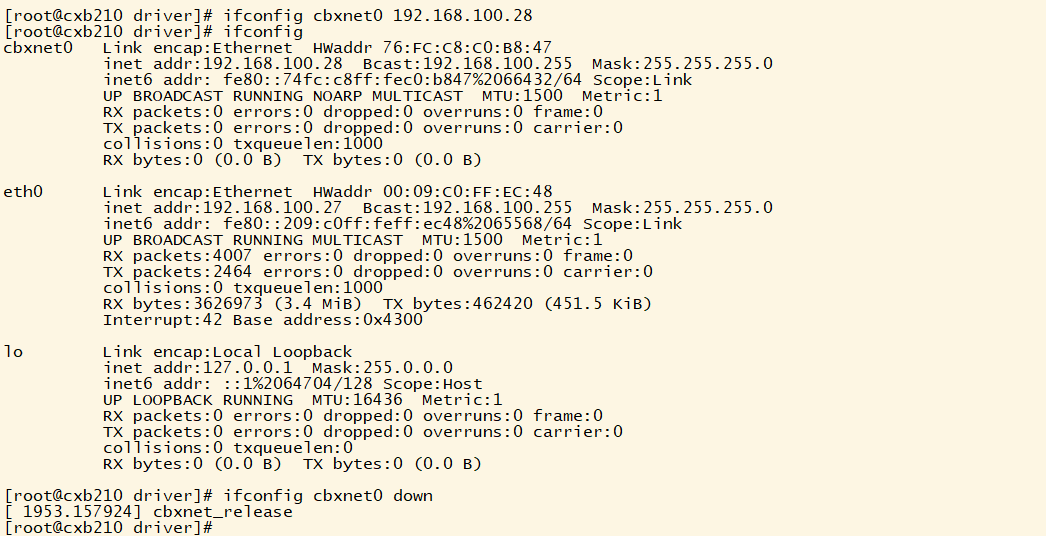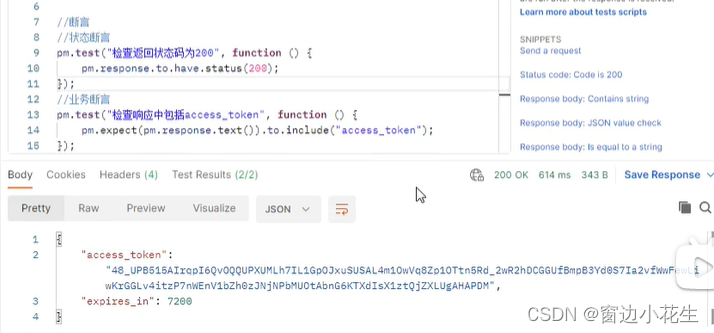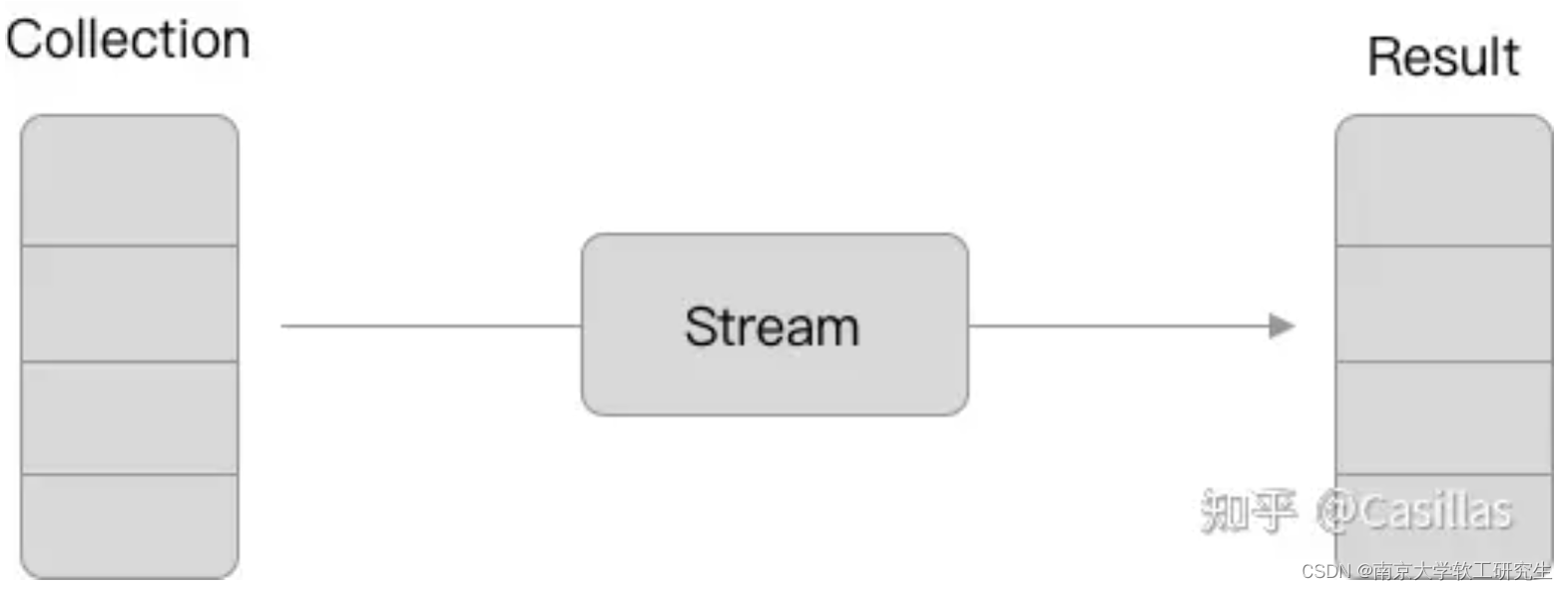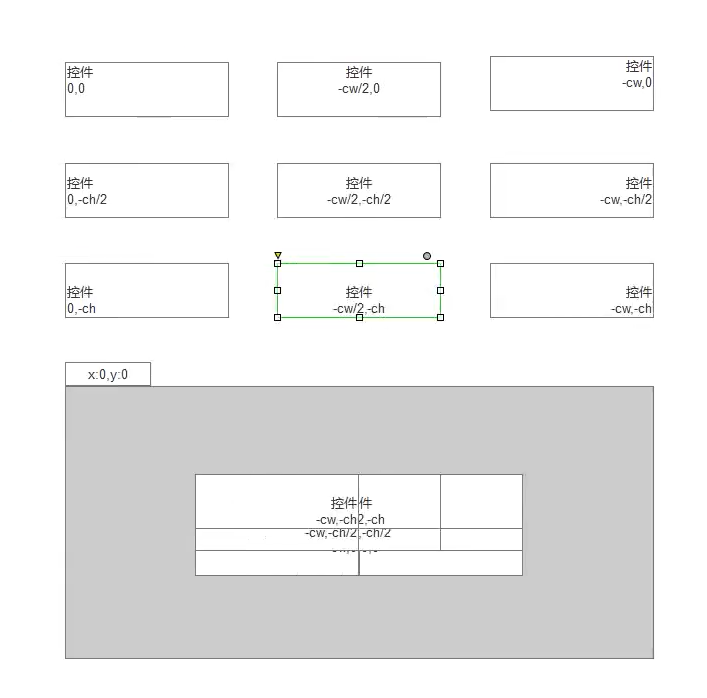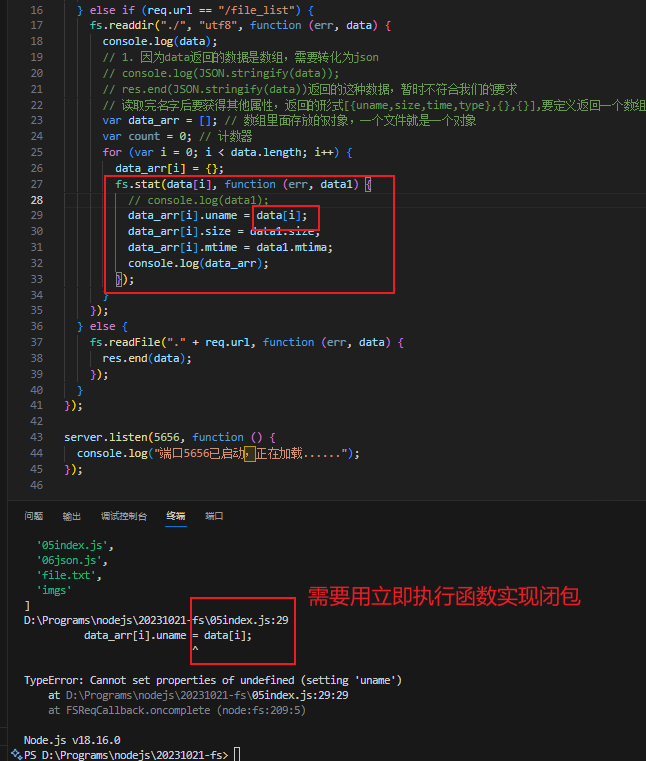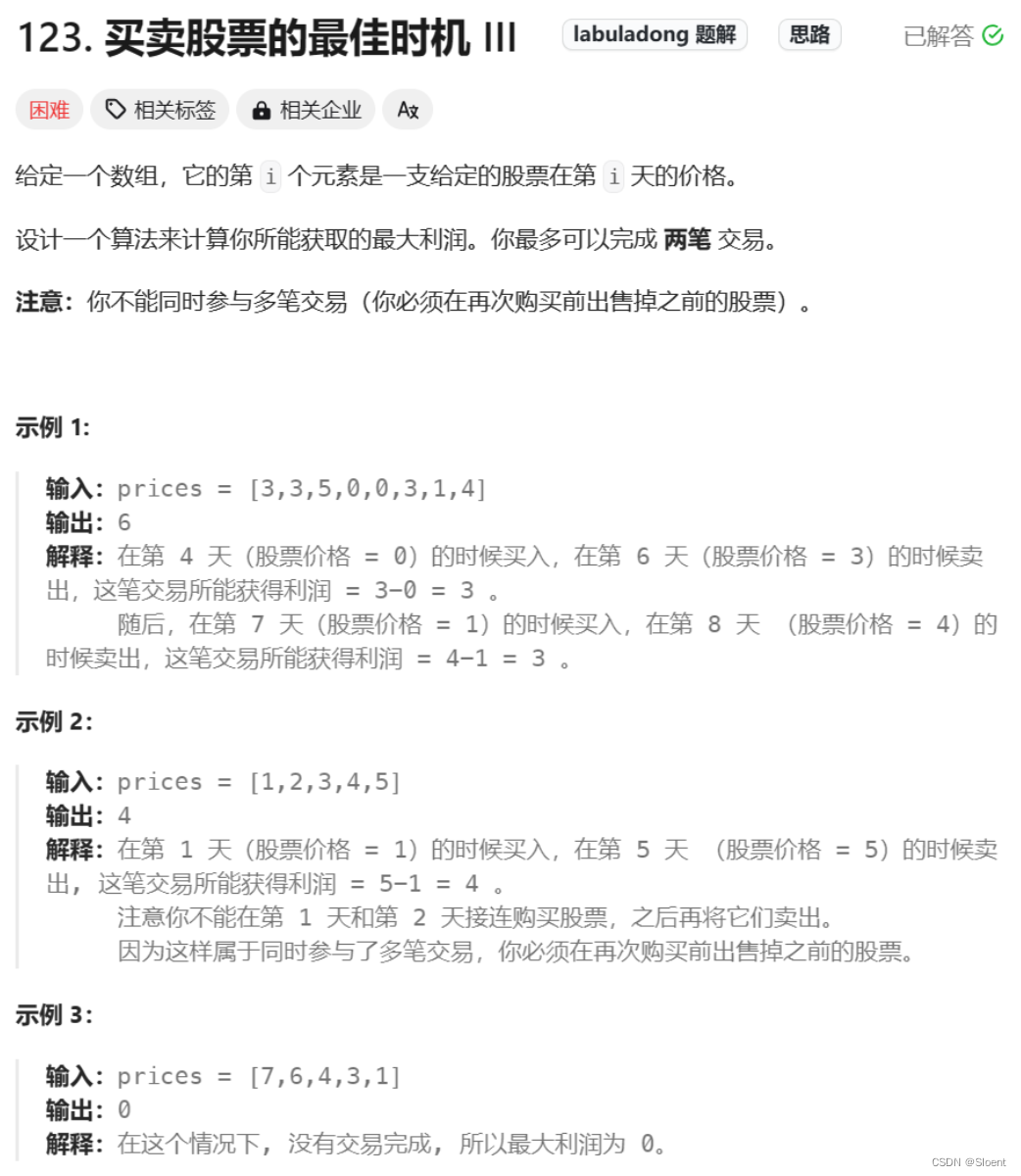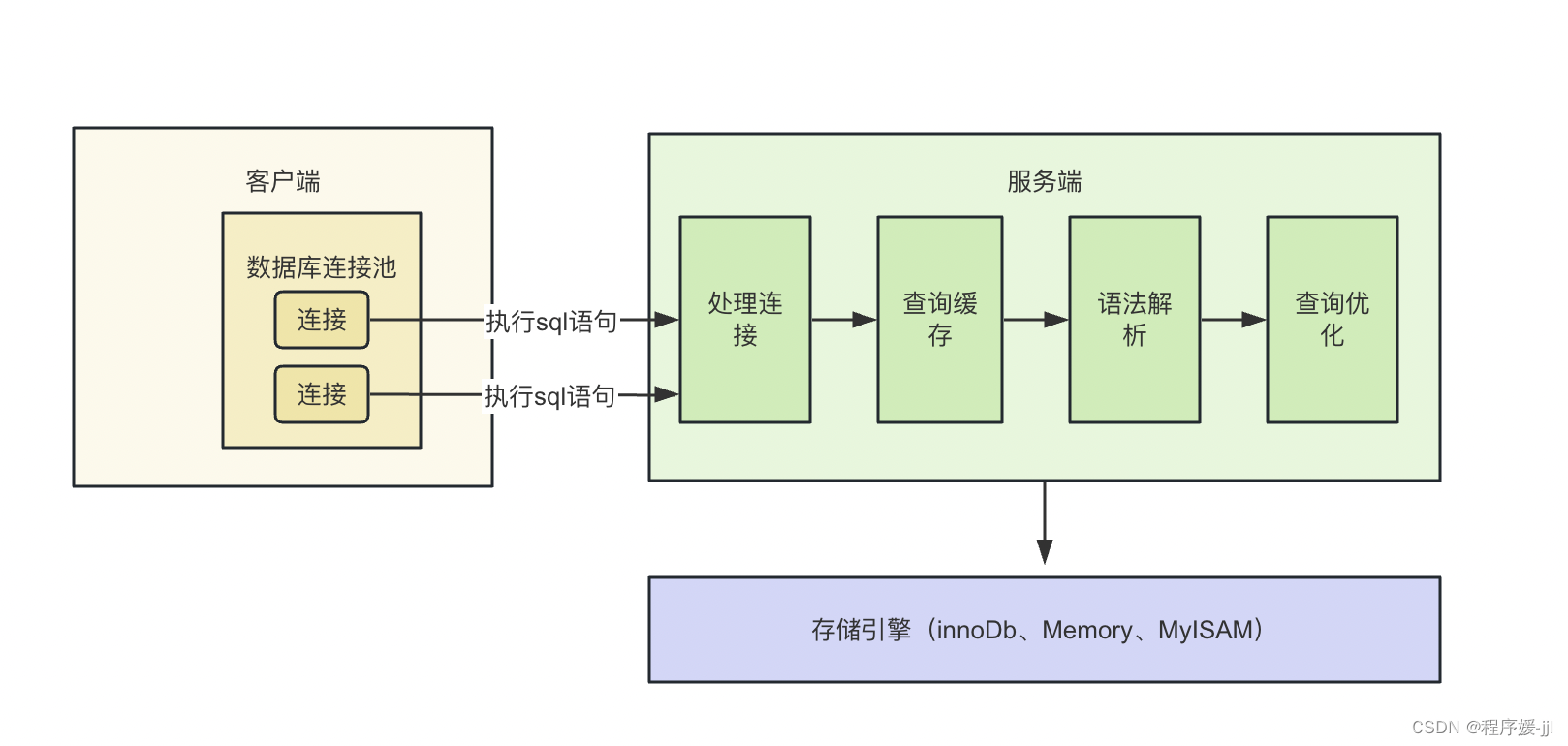本文主要探讨210的block驱动和net驱动。
block
随机存取设备且读写是按块进行,缓冲区用于暂存数据,达条件后一次性写入设备或读到缓冲区
块设备与字符设备:同一设备支持块和字符访问策略,块设备驱动层支持缓冲区,字符设备驱动层没有缓冲
块设备单位:扇区(Sectors):1扇区为512(倍)字节,块(Blocks):1块包含1个或多个扇区,段(Segments):若干相邻块组成,页(Page):内核内存映射管理基本单位
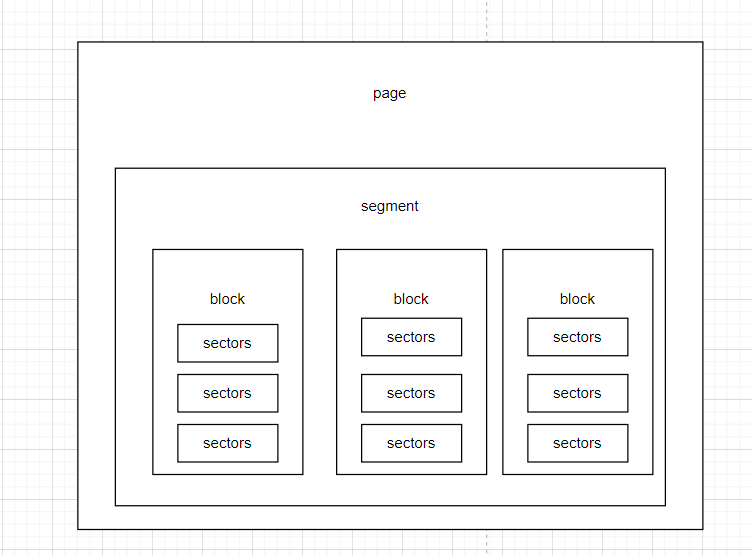
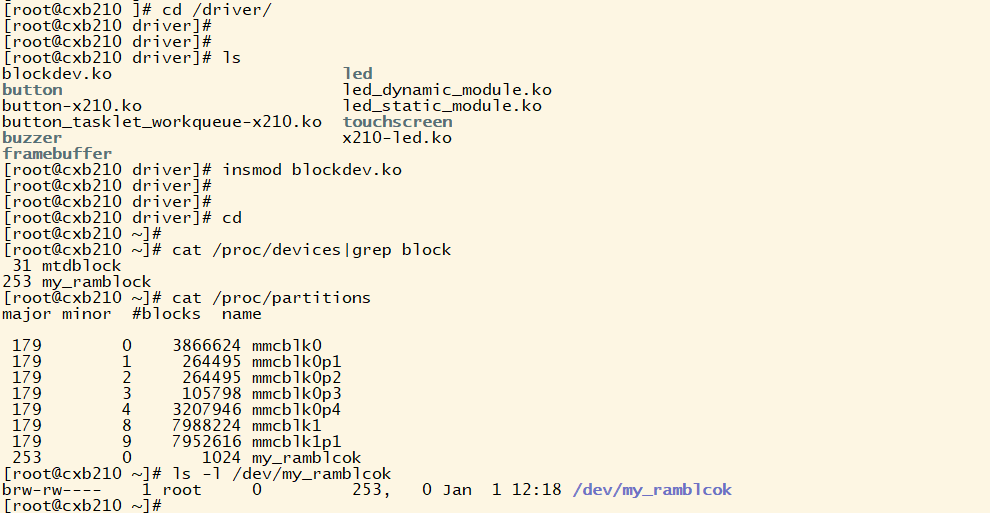
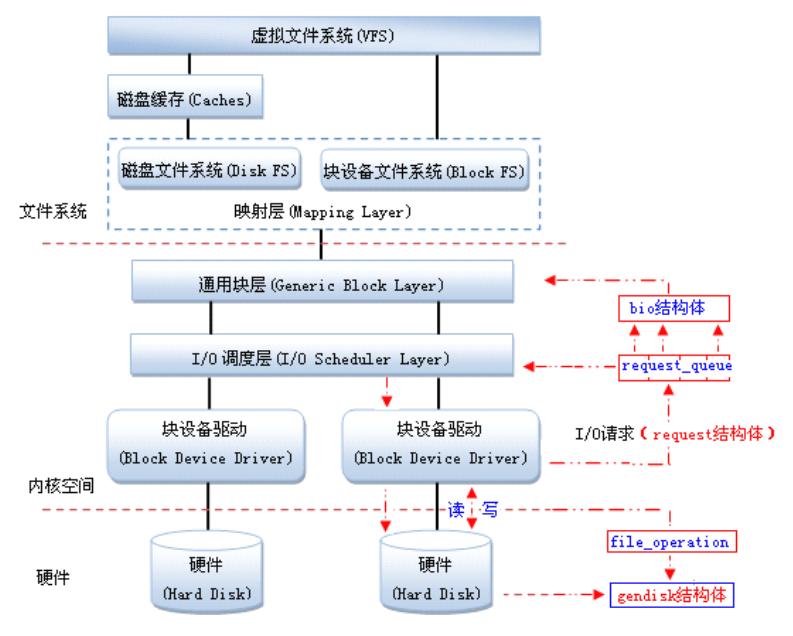
VFS是linux系统内核软件层,统一数据结构管理各种逻辑文件系统,接受用户层对文件系统各种操作,给应用层提供标准文件操作接口,
内核空间层:通用块层(generic Block Layer):负责维持I/O请求在文件系统与底层物理磁盘关系(bio结构对应I/O请求)IO调度层:多请求到块设备,对读写请求排序在执行以扩大效率,映射层(Mapping Layer):将文件访问映射为设备访问
块设备驱动:设备I/O操作,向块设备发出请求(request结构体描述),请求速度很慢,内核提供队列机制把I/O请求添加到队列中,提交请求前内核会先执行请求合并和排序以提高访问的效率,I/O调度程序子系统提交I/O请求,挂起块I/O 请求,决定队列请求顺序和派发请求到设备
结构体
block_device:块设备实例
struct block_device {
dev_t bd_dev; /* not a kdev_t - it's a search key */
struct inode * bd_inode; /* will die */
struct super_block * bd_super;
int bd_openers;
struct mutex bd_mutex; /* open/close mutex */
struct list_head bd_inodes;
void * bd_claiming;
void * bd_holder;
int bd_holders;
#ifdef CONFIG_SYSFS
struct list_head bd_holder_list;
#endif
struct block_device * bd_contains;
unsigned bd_block_size;
struct hd_struct * bd_part;
/* number of times partitions within this device have been opened. */
unsigned bd_part_count;
int bd_invalidated;
struct gendisk * bd_disk;
struct list_head bd_list;
/*
* Private data. You must have bd_claim'ed the block_device
* to use this. NOTE: bd_claim allows an owner to claim
* the same device multiple times, the owner must take special
* care to not mess up bd_private for that case.
*/
unsigned long bd_private;
/* The counter of freeze processes */
int bd_fsfreeze_count;
/* Mutex for freeze */
struct mutex bd_fsfreeze_mutex;
};hd_struct:分区信息
struct hd_struct {
sector_t start_sect;
sector_t nr_sects;
sector_t alignment_offset;
unsigned int discard_alignment;
struct device __dev;
struct kobject *holder_dir;
int policy, partno;
#ifdef CONFIG_FAIL_MAKE_REQUEST
int make_it_fail;
#endif
unsigned long stamp;
int in_flight[2];
#ifdef CONFIG_SMP
struct disk_stats __percpu *dkstats;
#else
struct disk_stats dkstats;
#endif
struct rcu_head rcu_head;
char partition_name[GENHD_PART_NAME_SIZE];
};request:内核请求队列
/*
* try to put the fields that are referenced together in the same cacheline.
* if you modify this structure, be sure to check block/blk-core.c:rq_init()
* as well!
*/
struct request {
struct list_head queuelist;
struct call_single_data csd;
struct request_queue *q;
unsigned int cmd_flags;
enum rq_cmd_type_bits cmd_type;
unsigned long atomic_flags;
int cpu;
/* the following two fields are internal, NEVER access directly */
unsigned int __data_len; /* total data len */
sector_t __sector; /* sector cursor */
struct bio *bio;
struct bio *biotail;
struct hlist_node hash; /* merge hash */
/*
* The rb_node is only used inside the io scheduler, requests
* are pruned when moved to the dispatch queue. So let the
* completion_data share space with the rb_node.
*/
union {
struct rb_node rb_node; /* sort/lookup */
void *completion_data;
};
/*
* Three pointers are available for the IO schedulers, if they need
* more they have to dynamically allocate it.
*/
void *elevator_private;
void *elevator_private2;
void *elevator_private3;
struct gendisk *rq_disk;
unsigned long start_time;
#ifdef CONFIG_BLK_CGROUP
unsigned long long start_time_ns;
unsigned long long io_start_time_ns; /* when passed to hardware */
#endif
/* Number of scatter-gather DMA addr+len pairs after
* physical address coalescing is performed.
*/
unsigned short nr_phys_segments;
unsigned short ioprio;
int ref_count;
void *special; /* opaque pointer available for LLD use */
char *buffer; /* kaddr of the current segment if available */
int tag;
int errors;
/*
* when request is used as a packet command carrier
*/
unsigned char __cmd[BLK_MAX_CDB];
unsigned char *cmd;
unsigned short cmd_len;
unsigned int extra_len; /* length of alignment and padding */
unsigned int sense_len;
unsigned int resid_len; /* residual count */
void *sense;
unsigned long deadline;
struct list_head timeout_list;
unsigned int timeout;
int retries;
/*
* completion callback.
*/
rq_end_io_fn *end_io;
void *end_io_data;
/* for bidi */
struct request *next_rq;
};
request_queue:内核申请request资源建立请求链表并填写BIO形成队列
struct request_queue
{
/*
* Together with queue_head for cacheline sharing
*/
struct list_head queue_head;
struct request *last_merge;
struct elevator_queue *elevator;
/*
* the queue request freelist, one for reads and one for writes
*/
struct request_list rq;
request_fn_proc *request_fn;
make_request_fn *make_request_fn;
prep_rq_fn *prep_rq_fn;
unplug_fn *unplug_fn;
merge_bvec_fn *merge_bvec_fn;
prepare_flush_fn *prepare_flush_fn;
softirq_done_fn *softirq_done_fn;
rq_timed_out_fn *rq_timed_out_fn;
dma_drain_needed_fn *dma_drain_needed;
lld_busy_fn *lld_busy_fn;
/*
* Dispatch queue sorting
*/
sector_t end_sector;
struct request *boundary_rq;
/*
* Auto-unplugging state
*/
struct timer_list unplug_timer;
int unplug_thresh; /* After this many requests */
unsigned long unplug_delay; /* After this many jiffies */
struct work_struct unplug_work;
struct backing_dev_info backing_dev_info;
/*
* The queue owner gets to use this for whatever they like.
* ll_rw_blk doesn't touch it.
*/
void *queuedata;
/*
* queue needs bounce pages for pages above this limit
*/
gfp_t bounce_gfp;
/*
* various queue flags, see QUEUE_* below
*/
unsigned long queue_flags;
/*
* protects queue structures from reentrancy. ->__queue_lock should
* _never_ be used directly, it is queue private. always use
* ->queue_lock.
*/
spinlock_t __queue_lock;
spinlock_t *queue_lock;
/*
* queue kobject
*/
struct kobject kobj;
/*
* queue settings
*/
unsigned long nr_requests; /* Max # of requests */
unsigned int nr_congestion_on;
unsigned int nr_congestion_off;
unsigned int nr_batching;
void *dma_drain_buffer;
unsigned int dma_drain_size;
unsigned int dma_pad_mask;
unsigned int dma_alignment;
struct blk_queue_tag *queue_tags;
struct list_head tag_busy_list;
unsigned int nr_sorted;
unsigned int in_flight[2];
unsigned int rq_timeout;
struct timer_list timeout;
struct list_head timeout_list;
struct queue_limits limits;
/*
* sg stuff
*/
unsigned int sg_timeout;
unsigned int sg_reserved_size;
int node;
#ifdef CONFIG_BLK_DEV_IO_TRACE
struct blk_trace *blk_trace;
#endif
/*
* reserved for flush operations
*/
unsigned int ordered, next_ordered, ordseq;
int orderr, ordcolor;
struct request pre_flush_rq, bar_rq, post_flush_rq;
struct request *orig_bar_rq;
struct mutex sysfs_lock;
#if defined(CONFIG_BLK_DEV_BSG)
struct bsg_class_device bsg_dev;
#endif
};
bio:块数据传送时怎样完成填充或读取块给driver
struct bio {
sector_t bi_sector; /* device address in 512 byte
sectors */
struct bio *bi_next; /* request queue link */
struct block_device *bi_bdev;
unsigned long bi_flags; /* status, command, etc */
unsigned long bi_rw; /* bottom bits READ/WRITE,
* top bits priority
*/
unsigned short bi_vcnt; /* how many bio_vec's */
unsigned short bi_idx; /* current index into bvl_vec */
/* Number of segments in this BIO after
* physical address coalescing is performed.
*/
unsigned int bi_phys_segments;
unsigned int bi_size; /* residual I/O count */
/*
* To keep track of the max segment size, we account for the
* sizes of the first and last mergeable segments in this bio.
*/
unsigned int bi_seg_front_size;
unsigned int bi_seg_back_size;
unsigned int bi_max_vecs; /* max bvl_vecs we can hold */
unsigned int bi_comp_cpu; /* completion CPU */
atomic_t bi_cnt; /* pin count */
struct bio_vec *bi_io_vec; /* the actual vec list */
bio_end_io_t *bi_end_io;
void *bi_private;
#if defined(CONFIG_BLK_DEV_INTEGRITY)
struct bio_integrity_payload *bi_integrity; /* data integrity */
#endif
bio_destructor_t *bi_destructor; /* destructor */
/*
* We can inline a number of vecs at the end of the bio, to avoid
* double allocations for a small number of bio_vecs. This member
* MUST obviously be kept at the very end of the bio.
*/
struct bio_vec bi_inline_vecs[0];
};
gendisk:通用硬盘
struct gendisk {
/* major, first_minor and minors are input parameters only,
* don't use directly. Use disk_devt() and disk_max_parts().
*/
int major; /* major number of driver */
int first_minor;
int minors; /* maximum number of minors, =1 for
* disks that can't be partitioned. */
char disk_name[DISK_NAME_LEN]; /* name of major driver */
char *(*devnode)(struct gendisk *gd, mode_t *mode);
/* Array of pointers to partitions indexed by partno.
* Protected with matching bdev lock but stat and other
* non-critical accesses use RCU. Always access through
* helpers.
*/
struct disk_part_tbl *part_tbl;
struct hd_struct part0;
const struct block_device_operations *fops;
struct request_queue *queue;
void *private_data;
int flags;
struct device *driverfs_dev; // FIXME: remove
struct kobject *slave_dir;
struct timer_rand_state *random;
atomic_t sync_io; /* RAID */
struct work_struct async_notify;
#ifdef CONFIG_BLK_DEV_INTEGRITY
struct blk_integrity *integrity;
#endif
int node_id;
};
net
物理网卡:硬件网卡设备
虚拟网卡eth0等,fconfig查看网卡
网络命令ping、ifconfig等对网络API封装
socket、bind、listen、connect、send、recv等API对网络驱动封装
网络设备抽象为发送和接收数据包网络接口
结构体:net_device:网卡设备,sk_buff:内核缓冲区用于发送接收数据包
dm9000

module_init(dm9000_init);
module_exit(dm9000_cleanup);static int __init dm9000_init(void)
{
/* disable buzzer */
s3c_gpio_setpull(S5PV210_GPD0(2), S3C_GPIO_PULL_UP);//设置上拉
s3c_gpio_cfgpin(S5PV210_GPD0(2), S3C_GPIO_SFN(1));//设置输出模式
gpio_set_value(S5PV210_GPD0(2), 0);//设置输出值为0
dm9000_power_int();
printk(KERN_INFO "%s Ethernet Driver, V%s\n", CARDNAME, DRV_VERSION);
return platform_driver_register(&dm9000_driver);
}
static void __exit dm9000_cleanup(void)
{
platform_driver_unregister(&dm9000_driver);
}static struct platform_driver dm9000_driver = {
.driver = {
.name = "dm9000",
.owner = THIS_MODULE,
.pm = &dm9000_drv_pm_ops,
},
.probe = dm9000_probe,
.remove = __devexit_p(dm9000_drv_remove),
};
static int __devinit dm9000_probe(struct platform_device *pdev)
{
struct dm9000_plat_data *pdata = pdev->dev.platform_data;
struct board_info *db; /* Point a board information structure */
struct net_device *ndev;
const unsigned char *mac_src;
int ret = 0;
int iosize;
int i;
u32 id_val;
/* Init network device */
ndev = alloc_etherdev(sizeof(struct board_info));
if (!ndev) {
dev_err(&pdev->dev, "could not allocate device.\n");
return -ENOMEM;
}
SET_NETDEV_DEV(ndev, &pdev->dev);
dev_dbg(&pdev->dev, "dm9000_probe()\n");
/* setup board info structure */
db = netdev_priv(ndev);
db->dev = &pdev->dev;
db->ndev = ndev;
spin_lock_init(&db->lock);
mutex_init(&db->addr_lock);
INIT_DELAYED_WORK(&db->phy_poll, dm9000_poll_work);
db->addr_res = platform_get_resource(pdev, IORESOURCE_MEM, 0);
db->data_res = platform_get_resource(pdev, IORESOURCE_MEM, 1);
db->irq_res = platform_get_resource(pdev, IORESOURCE_IRQ, 0);
if (db->addr_res == NULL || db->data_res == NULL ||
db->irq_res == NULL) {
dev_err(db->dev, "insufficient resources\n");
ret = -ENOENT;
goto out;
}
db->irq_wake = platform_get_irq(pdev, 1);
if (db->irq_wake >= 0) {
dev_dbg(db->dev, "wakeup irq %d\n", db->irq_wake);
ret = request_irq(db->irq_wake, dm9000_wol_interrupt,IRQF_SHARED, dev_name(db->dev), ndev);
//lqm changed irq method.
//ret = request_irq(db->irq_wake, dm9000_wol_interrupt,IORESOURCE_IRQ_HIGHLEVEL, dev_name(db->dev), ndev);
if (ret) {
dev_err(db->dev, "cannot get wakeup irq (%d)\n", ret);
} else {
/* test to see if irq is really wakeup capable */
ret = set_irq_wake(db->irq_wake, 1);
if (ret) {
dev_err(db->dev, "irq %d cannot set wakeup (%d)\n",
db->irq_wake, ret);
ret = 0;
} else {
set_irq_wake(db->irq_wake, 0);
db->wake_supported = 1;
}
}
}
iosize = resource_size(db->addr_res);
db->addr_req = request_mem_region(db->addr_res->start, iosize,
pdev->name);
if (db->addr_req == NULL) {
dev_err(db->dev, "cannot claim address reg area\n");
ret = -EIO;
goto out;
}
db->io_addr = ioremap(db->addr_res->start, iosize);
if (db->io_addr == NULL) {
dev_err(db->dev, "failed to ioremap address reg\n");
ret = -EINVAL;
goto out;
}
iosize = resource_size(db->data_res);
db->data_req = request_mem_region(db->data_res->start, iosize,
pdev->name);
if (db->data_req == NULL) {
dev_err(db->dev, "cannot claim data reg area\n");
ret = -EIO;
goto out;
}
db->io_data = ioremap(db->data_res->start, iosize);
if (db->io_data == NULL) {
dev_err(db->dev, "failed to ioremap data reg\n");
ret = -EINVAL;
goto out;
}
/* fill in parameters for net-dev structure */
ndev->base_addr = (unsigned long)db->io_addr;
ndev->irq = db->irq_res->start;
/* ensure at least we have a default set of IO routines */
dm9000_set_io(db, iosize);
/* check to see if anything is being over-ridden */
if (pdata != NULL) {
/* check to see if the driver wants to over-ride the
* default IO width */
if (pdata->flags & DM9000_PLATF_8BITONLY)
dm9000_set_io(db, 1);
if (pdata->flags & DM9000_PLATF_16BITONLY)
dm9000_set_io(db, 2);
if (pdata->flags & DM9000_PLATF_32BITONLY)
dm9000_set_io(db, 4);
/* check to see if there are any IO routine
* over-rides */
if (pdata->inblk != NULL)
db->inblk = pdata->inblk;
if (pdata->outblk != NULL)
db->outblk = pdata->outblk;
if (pdata->dumpblk != NULL)
db->dumpblk = pdata->dumpblk;
db->flags = pdata->flags;
}
#ifdef CONFIG_DM9000_FORCE_SIMPLE_PHY_POLL
db->flags |= DM9000_PLATF_SIMPLE_PHY;
#endif
dm9000_reset(db);
/* try multiple times, DM9000 sometimes gets the read wrong */
for (i = 0; i < 8; i++) {
id_val = ior(db, DM9000_VIDL);
id_val |= (u32)ior(db, DM9000_VIDH) << 8;
id_val |= (u32)ior(db, DM9000_PIDL) << 16;
id_val |= (u32)ior(db, DM9000_PIDH) << 24;
if (id_val == DM9000_ID)
break;
dev_err(db->dev, "read wrong id 0x%08x\n", id_val);
}
if (id_val != DM9000_ID) {
dev_err(db->dev, "wrong id: 0x%08x\n", id_val);
ret = -ENODEV;
goto out;
}
/* Identify what type of DM9000 we are working on */
/* I/O mode */
db->io_mode = ior(db, DM9000_ISR) >> 6; /* ISR bit7:6 keeps I/O mode */
id_val = ior(db, DM9000_CHIPR);
dev_dbg(db->dev, "dm9000 revision 0x%02x , io_mode %02x \n", id_val, db->io_mode);
switch (id_val) {
case CHIPR_DM9000A:
db->type = TYPE_DM9000A;
break;
case 0x1a:
db->type = TYPE_DM9000C;
break;
default:
dev_dbg(db->dev, "ID %02x => defaulting to DM9000E\n", id_val);
db->type = TYPE_DM9000E;
}
/* from this point we assume that we have found a DM9000 */
/* driver system function */
ether_setup(ndev);
ndev->netdev_ops = &dm9000_netdev_ops;
ndev->watchdog_timeo = msecs_to_jiffies(watchdog);
ndev->ethtool_ops = &dm9000_ethtool_ops;
db->msg_enable = NETIF_MSG_LINK;
db->mii.phy_id_mask = 0x1f;
db->mii.reg_num_mask = 0x1f;
db->mii.force_media = 0;
db->mii.full_duplex = 0;
db->mii.dev = ndev;
db->mii.mdio_read = dm9000_phy_read;
db->mii.mdio_write = dm9000_phy_write;
mac_src = "eeprom";
/* try reading the node address from the attached EEPROM */
for (i = 0; i < 6; i += 2)
dm9000_read_eeprom(db, i / 2, ndev->dev_addr+i);
if (!is_valid_ether_addr(ndev->dev_addr) && pdata != NULL) {
mac_src = "platform data";
//memcpy(ndev->dev_addr, pdata->dev_addr, 6);
/* mac from bootloader */
memcpy(ndev->dev_addr, mac, 6);
}
if (!is_valid_ether_addr(ndev->dev_addr)) {
/* try reading from mac */
mac_src = "chip";
for (i = 0; i < 6; i++)
ndev->dev_addr[i] = ior(db, i+DM9000_PAR);
}
if (!is_valid_ether_addr(ndev->dev_addr))
dev_warn(db->dev, "%s: Invalid ethernet MAC address. Please "
"set using ifconfig\n", ndev->name);
platform_set_drvdata(pdev, ndev);
ret = register_netdev(ndev);
if (ret == 0)
printk(KERN_INFO "%s: dm9000%c at %p,%p IRQ %d MAC: %pM (%s)\n",
ndev->name, dm9000_type_to_char(db->type),
db->io_addr, db->io_data, ndev->irq,
ndev->dev_addr, mac_src);
return 0;
out:
dev_err(db->dev, "not found (%d).\n", ret);
dm9000_release_board(pdev, db);
free_netdev(ndev);
return ret;
}struct platform_device s5p_device_dm9000 = {
.name = "dm9000",
.id = 0,
.num_resources = ARRAY_SIZE(s5p_dm9000_resources),
.resource = s5p_dm9000_resources,
.dev = {
.platform_data = &s5p_dm9000_platdata,
}
};
demo1:
虚拟块设备驱动
blockdev.c
#include <linux/module.h>
#include <linux/slab.h>
#include <linux/errno.h>
#include <linux/interrupt.h>
#include <linux/mm.h>
#include <linux/fs.h>
#include <linux/kernel.h>
#include <linux/timer.h>
#include <linux/genhd.h>
#include <linux/hdreg.h>
#include <linux/ioport.h>
#include <linux/init.h>
#include <linux/wait.h>
#include <linux/blkdev.h>
#include <linux/blkpg.h>
#include <linux/delay.h>
#include <linux/io.h>
#include <asm/system.h>
#include <asm/uaccess.h>
#include <asm/dma.h>
#define RAMBLOCK_SIZE (1024*1024) // 1MB,2048扇区
static struct gendisk *my_ramblock_disk; // 磁盘设备的结构体
static struct request_queue *my_ramblock_queue; // 等待队列
static DEFINE_SPINLOCK(my_ramblock_lock);
static int major;
static unsigned char *my_ramblock_buf; // 虚拟块设备的内存指针
static void do_my_ramblock_request(struct request_queue *q)
{
struct request *req;
static int r_cnt = 0; //实验用,打印出驱动读与写的调度方法
static int w_cnt = 0;
req = blk_fetch_request(q);
while (NULL != req)
{
unsigned long start = blk_rq_pos(req) *512;
unsigned long len = blk_rq_cur_bytes(req);
if(rq_data_dir(req) == READ)
{
// 读请求
memcpy(req->buffer, my_ramblock_buf + start, len); //读操作,
printk("do_my_ramblock-request read %d times\n", r_cnt++);
}
else
{
// 写请求
memcpy( my_ramblock_buf+start, req->buffer, len); //写操作
printk("do_my_ramblock request write %d times\n", w_cnt++);
}
if(!__blk_end_request_cur(req, 0))
{
req = blk_fetch_request(q);
}
}
}
static int blk_ioctl(struct block_device *dev, fmode_t no, unsigned cmd, unsigned long arg)
{
return -ENOTTY;
}
static int blk_open (struct block_device *dev , fmode_t no)
{
printk("blk mount succeed\n");
return 0;
}
static int blk_release(struct gendisk *gd , fmode_t no)
{
printk("blk umount succeed\n");
return 0;
}
static const struct block_device_operations my_ramblock_fops =
{
.owner = THIS_MODULE,
.open = blk_open,
.release = blk_release,
.ioctl = blk_ioctl,
};
static int my_ramblock_init(void)
{
major = register_blkdev(0, "my_ramblock");
if (major < 0)
{
printk("fail to regiser my_ramblock\n");
return -EBUSY;
}
// 实例化
my_ramblock_disk = alloc_disk(1); //次设备个数 ,分区个数 +1
//分配设置请求队列,提供读写能力
my_ramblock_queue = blk_init_queue(do_my_ramblock_request, &my_ramblock_lock);
//设置硬盘属性
my_ramblock_disk->major = major;
my_ramblock_disk->first_minor = 0;
my_ramblock_disk->fops = &my_ramblock_fops;
sprintf(my_ramblock_disk->disk_name, "my_ramblcok"); // /dev/name
my_ramblock_disk->queue = my_ramblock_queue;
set_capacity(my_ramblock_disk, RAMBLOCK_SIZE / 512);
/* 硬件相关操作 */
my_ramblock_buf = kzalloc(RAMBLOCK_SIZE, GFP_KERNEL);
add_disk(my_ramblock_disk); // 向驱动框架注册一个disk或者一个partation的接口
return 0;
}
static void my_ramblock_exit(void)
{
unregister_blkdev(major, "my_ramblock");
del_gendisk(my_ramblock_disk);
put_disk(my_ramblock_disk);
blk_cleanup_queue(my_ramblock_queue);
kfree(my_ramblock_buf);
}
module_init(my_ramblock_init);
module_exit(my_ramblock_exit);
MODULE_LICENSE("GPL");Makefile
KERN_DIR = /root/kernel
obj-m += blockdev.o
all:
make -C $(KERN_DIR) M=`pwd` modules
cp:
cp *.ko /root/rootfs/driver -f
.PHONY: clean
clean:
make -C $(KERN_DIR) M=`pwd` modules clean测试示例:

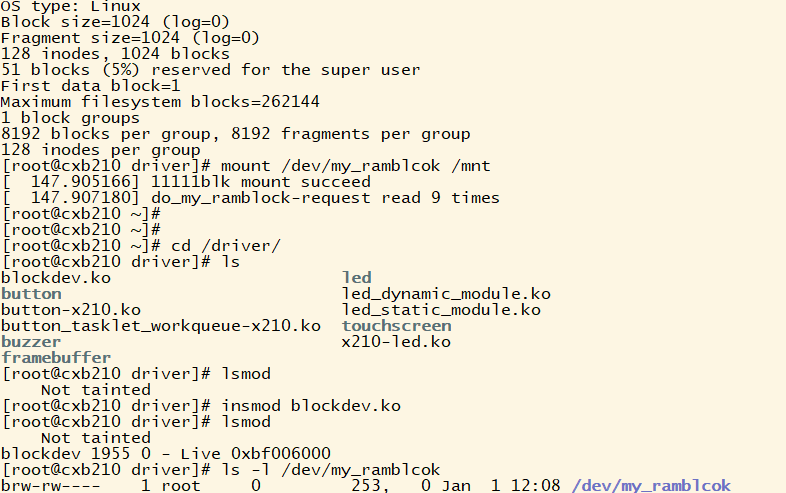

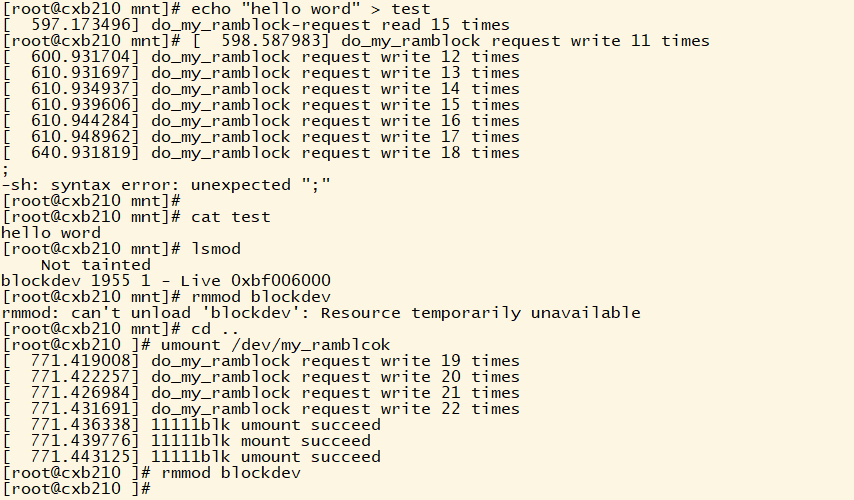
demo2:
虚拟网卡驱动
net.c
#include <linux/module.h>
#include <linux/sched.h>
#include <linux/kernel.h> /* printk() */
#include <linux/slab.h> /* kmalloc() */
#include <linux/errno.h> /* error codes */
#include <linux/types.h> /* size_t */
#include <linux/interrupt.h> /* mark_bh */
#include <linux/in.h>
#include <linux/netdevice.h> /* struct device, and other headers */
#include <linux/etherdevice.h> /* eth_type_trans */
#include <linux/ip.h> /* struct iphdr */
#include <linux/tcp.h> /* struct tcphdr */
#include <linux/skbuff.h>
#include <linux/if_ether.h>
#include <linux/in6.h>
#include <asm/uaccess.h>
#include <asm/checksum.h>
#include <linux/platform_device.h>
// 如果需要随机MAC地址则定义该宏
#define MAC_AUTO
static struct net_device *cbxnet_devs;
//网络设备结构体,作为net_device->priv
struct cbxnet_priv {
struct net_device_stats stats; //有用的统计信息
int status; //网络设备的状态信息,是发完数据包,还是接收到网络数据包
int rx_packetlen; //接收到的数据包长度
u8 *rx_packetdata; //接收到的数据
int tx_packetlen; //发送的数据包长度
u8 *tx_packetdata; //发送的数据
struct sk_buff *skb; //socket buffer结构体,网络各层之间传送数据都是通过这个结构体来实现的
spinlock_t lock; //自旋锁
};
//网络接口的打开函数
int cbxnet_open(struct net_device *dev)
{
printk("cbxnet_open\n");
#ifndef MAC_AUTO
int i;
for (i=0; i<6; i++)
dev->dev_addr[i] = 0xaa;
#else
random_ether_addr(dev->dev_addr); //随机源地址
#endif
netif_start_queue(dev); //打开传输队列,这样才能进行数据传输
return 0;
}
int cbxnet_release(struct net_device *dev)
{
printk("cbxnet_release\n");
//当网络接口关闭的时候,调用stop方法,这个函数表示不能再发送数据
netif_stop_queue(dev);
return 0;
}
//接包函数
void cbxnet_rx(struct net_device *dev, int len, unsigned char *buf)
{
struct sk_buff *skb;
struct cbxnet_priv *priv = (struct cbxnet_priv *) dev->ml_priv;
skb = dev_alloc_skb(len+2);//分配一个socket buffer,并且初始化skb->data,skb->tail和skb->head
if (!skb) {
printk("gecnet rx: low on mem - packet dropped\n");
priv->stats.rx_dropped++;
return;
}
skb_reserve(skb, 2); /* align IP on 16B boundary */
memcpy(skb_put(skb, len), buf, len);//skb_put是把数据写入到socket buffer
/* Write metadata, and then pass to the receive level */
skb->dev = dev;
skb->protocol = eth_type_trans(skb, dev);//返回的是协议号
skb->ip_summed = CHECKSUM_UNNECESSARY; //此处不校验
priv->stats.rx_packets++;//接收到包的个数+1
priv->stats.rx_bytes += len;//接收到包的长度
printk("cbxnet rx \n");
netif_rx(skb);//通知内核已经接收到包,并且封装成socket buffer传到上层
return;
}
//真正的处理的发送数据包
//模拟从一个网络向另一个网络发送数据包
void cbxnet_hw_tx(char *buf, int len, struct net_device *dev)
{
struct net_device *dest;//目标设备结构体,net_device存储一个网络接口的重要信息,是网络驱动程序的核心
struct cbxnet_priv *priv;
if (len < sizeof(struct ethhdr) + sizeof(struct iphdr))
{
printk("cbxnet: Hmm... packet too short (%i octets)\n", len);
return;
}
dest = cbxnet_devs;
priv = (struct cbxnet_priv *)dest->ml_priv; //目标dest中的priv
priv->rx_packetlen = len;
priv->rx_packetdata = buf;
printk("cbxnet tx \n");
dev_kfree_skb(priv->skb);
}
//发包函数
int cbxnet_tx(struct sk_buff *skb, struct net_device *dev)
{
int len;
char *data;
struct cbxnet_priv *priv = (struct cbxnet_priv *)dev->ml_priv;
if (skb == NULL)
{
printk("net_device %p, skb %p\n", dev, skb);
return 0;
}
len = skb->len < ETH_ZLEN ? ETH_ZLEN : skb->len;//ETH_ZLEN是所发的最小数据包的长度
data = skb->data;//将要发送的数据包中数据部分
priv->skb = skb;
cbxnet_hw_tx(data, len, dev);//真正的发送函数
return 0;
}
//设备初始化函数
int cbxnet_init(struct net_device *dev)
{
printk("cbxcnet_init\n");
ether_setup(dev);//填充一些以太网中的设备结构体的项
/* keep the default flags, just add NOARP */
dev->flags |= IFF_NOARP;
//为priv分配内存
dev->ml_priv = kmalloc(sizeof(struct cbxnet_priv), GFP_KERNEL);
if (dev->ml_priv == NULL)
return -ENOMEM;
memset(dev->ml_priv, 0, sizeof(struct cbxnet_priv));
spin_lock_init(&((struct cbxnet_priv *)dev->ml_priv)->lock);
return 0;
}
static const struct net_device_ops cbxnet_netdev_ops = {
.ndo_open = cbxnet_open, // 打开网卡 对应 ifconfig xx up
.ndo_stop = cbxnet_release, // 关闭网卡 对应 ifconfig xx down
.ndo_start_xmit = cbxnet_tx, // 开启数据包传输
.ndo_init = cbxnet_init, // 初始化网卡硬件
};
static void cbx_plat_net_release(struct device *dev)
{
printk("cbx_plat_net_release\n");
}
static int __devinit cbx_net_probe(struct platform_device *pdev)
{
int result=0;
cbxnet_devs = alloc_etherdev(sizeof(struct net_device));
cbxnet_devs->netdev_ops = &cbxnet_netdev_ops;
strcpy(cbxnet_devs->name, "cbxnet0");
if ((result = register_netdev(cbxnet_devs)))
printk("cbxnet: error %i registering device \"%s\"\n", result, cbxnet_devs->name);
return 0;
}
static int __devexit cbx_net_remove(struct platform_device *pdev) //设备移除接口
{
kfree(cbxnet_devs->ml_priv);
unregister_netdev(cbxnet_devs);
return 0;
}
static struct platform_device cbx_net= {
.name = "cbx_net",
.id = -1,
.dev = {
.release = cbx_plat_net_release,
},
};
static struct platform_driver cbx_net_driver = {
.probe = cbx_net_probe,
.remove = __devexit_p(cbx_net_remove),
.driver = {
.name ="cbx_net",
.owner = THIS_MODULE,
},
};
static int __init cbx_net_init(void)
{
printk("cbx_net_init \n");
platform_device_register(&cbx_net);
return platform_driver_register(&cbx_net_driver );
}
static void __exit cbx_net_cleanup(void)
{
platform_driver_unregister(&cbx_net_driver );
platform_device_unregister(&cbx_net);
}
module_init(cbx_net_init);
module_exit(cbx_net_cleanup);
MODULE_LICENSE("GPL");Makefile
KERN_DIR = /root/kernel
obj-m += net.o
all:
make -C $(KERN_DIR) M=`pwd` modules
cp:
cp *.ko /root/rootfs/driver -f
.PHONY: clean
clean:
make -C $(KERN_DIR) M=`pwd` modules clean测试示例:

